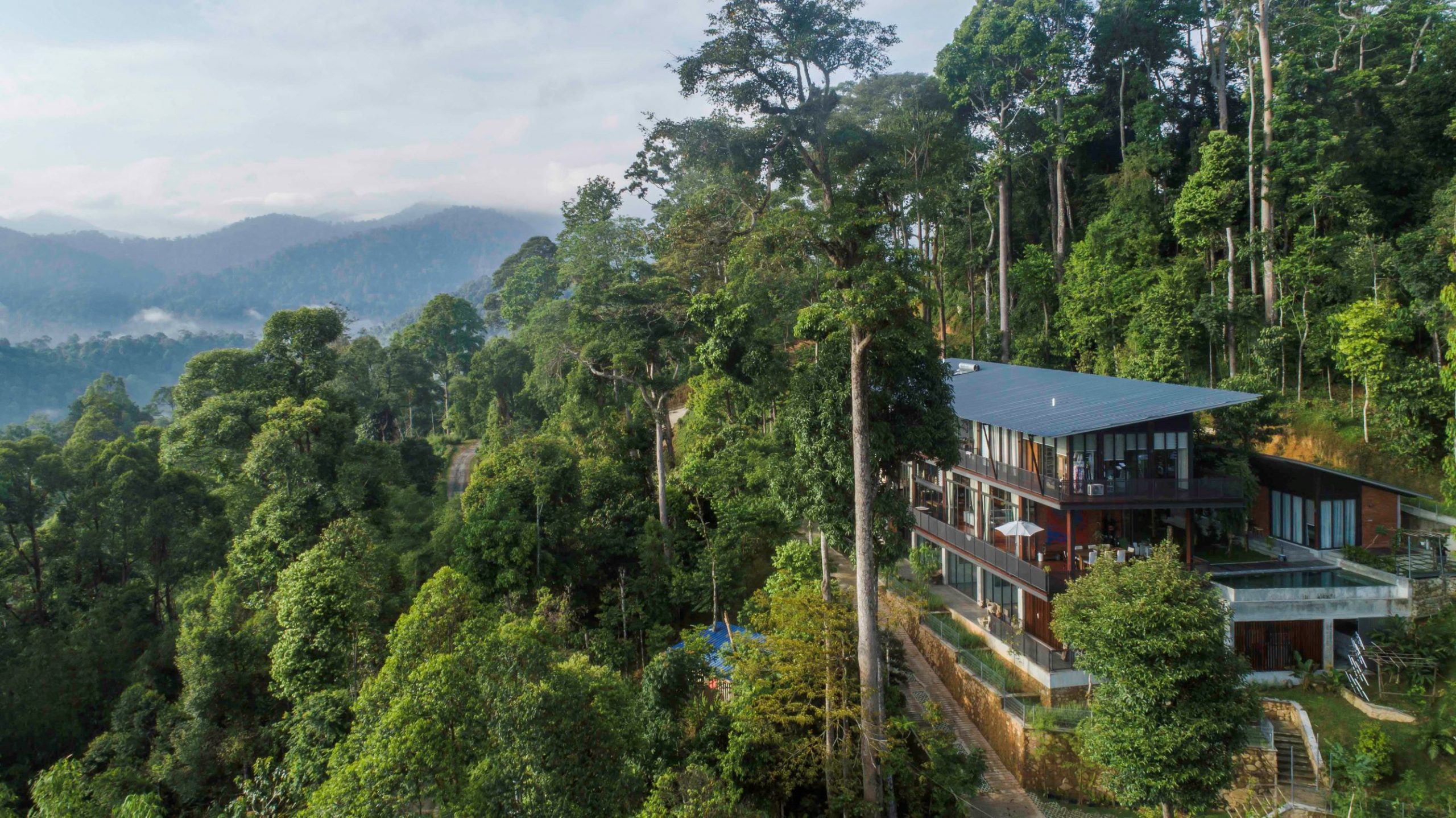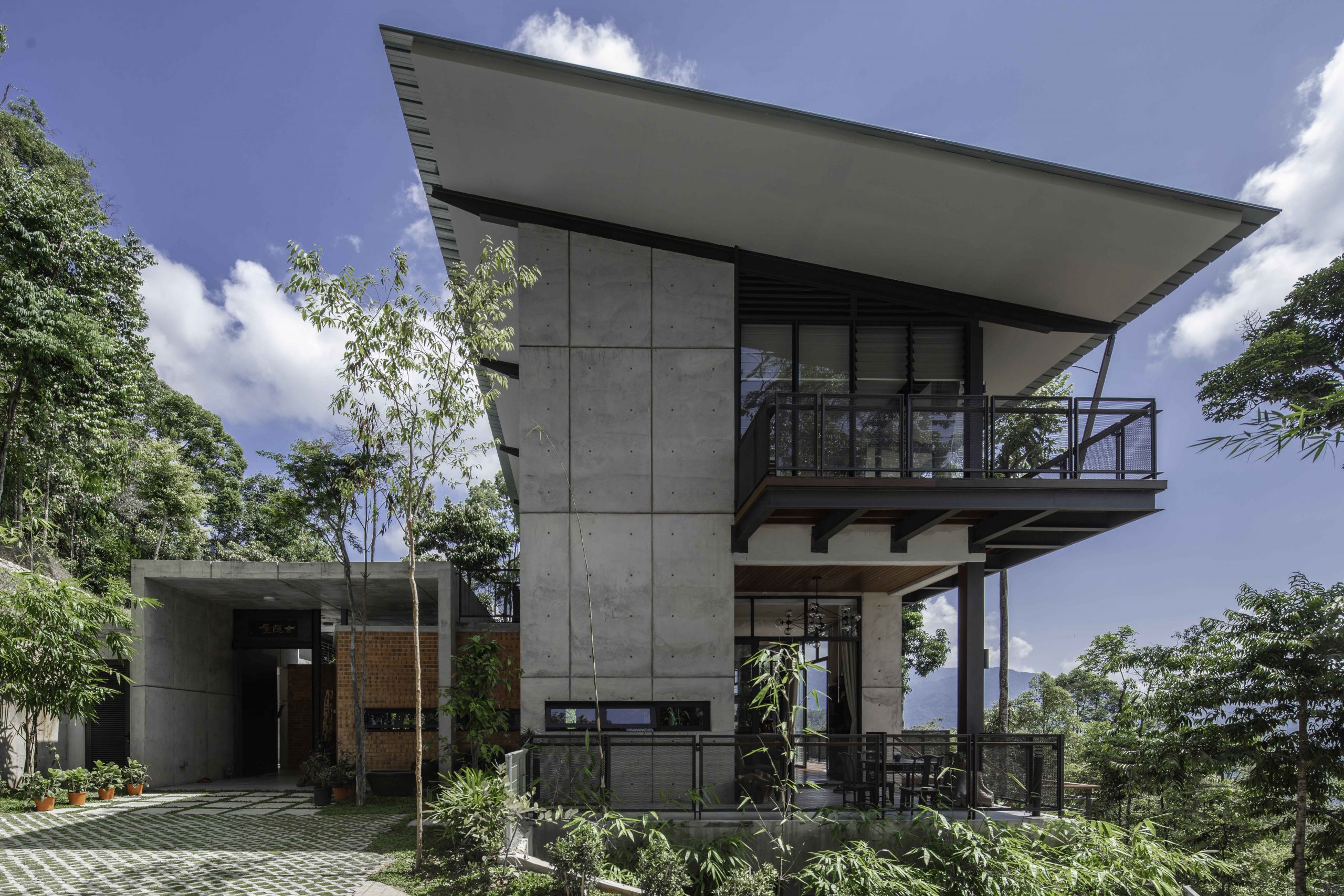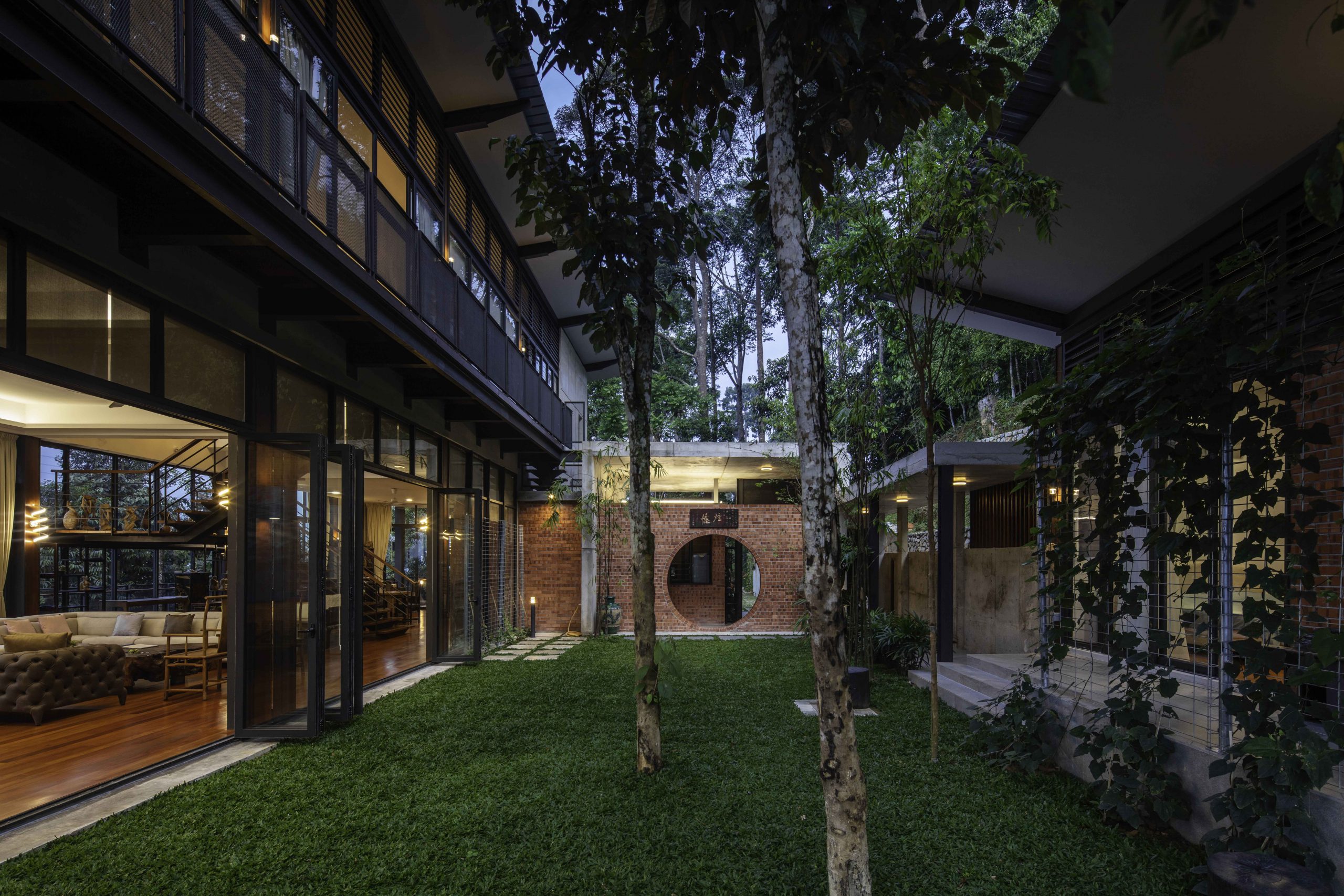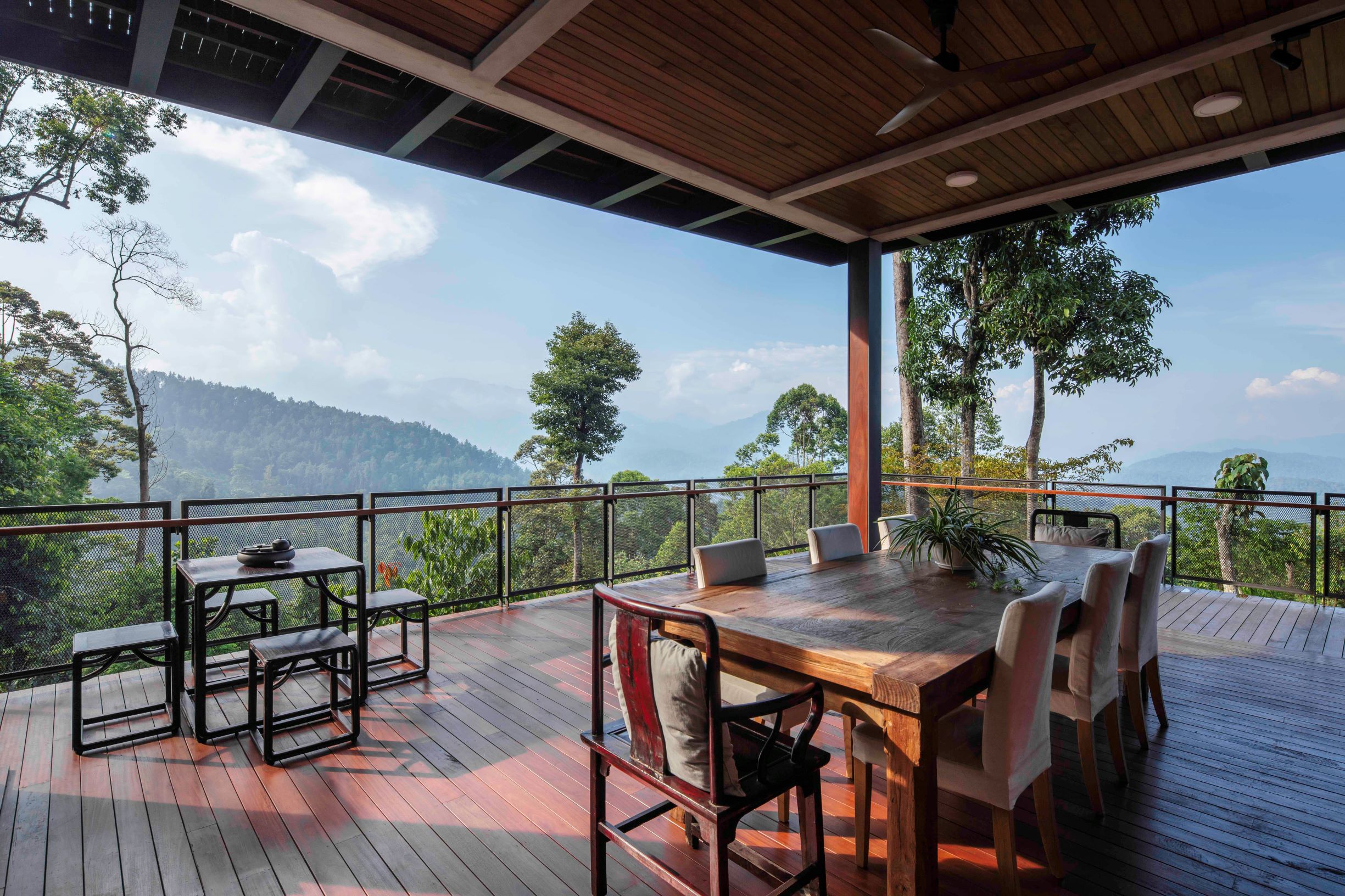Choo Gim Wah is a member of the Malaysia Institute of Architects (PAM) and Lembaga Arkitek Malaysia (LAM). Having worked in the industry for over 20 years, Choo is an accomplished architect with extensive design experience in private residential, commercial buildings and mixed-use developments. He has also successfully built many private residential houses on hill slopes and steep terrains with minimum disturbance to the natural landscapes. Choo was a member of the Technical Working Committee of the Ministry of Housing and Local Government, where he assisted the preparation of the ‘Guidelines on Buildings Requirements for the Disabled Persons’. Choo holds a master’s degree in architecture from the Miami University. His practice is driven by the pursuit of quality design and sensitivity to the climate and the environment.
In an urban context, we can use cranes to transport concrete, but in a forested area, this will be difficult. We need to prioritise the buildability and the ease of transport. Steel, for example, although considered expensive when used in a flat area, will be more competitive on a hill.
Canvas Hill Residence is located on a flat crest atop a hill in Pahang, Malaysia. Surrounded by tall trees and lush greenery, it has a courtyard by the slope framed by two pavilions. The main dwelling is an art space layered with cantilevered decks and sloped roof that mirrors the sloping terrain. The guest pavilion retains a similar language albeit smaller compared to the three-storey main building. The living spaces are configured in an open-plan design, connected to both the courtyard and the cantilevered timber deck with a view of Genting Highlands. The architect, Choo Gim Wah, shared with Construction+ his experience in designing such spaces, as well as his views about sustainability and the impact of the COVID-19 pandemic in his work.

Aerial view of Canvas Hill Residence
How do you balance aesthetics and sustainability, especially in working with slopes?
Essentially, wherever we build, we are governed by the by-laws in terms of what is allowable. Balancing between what’s feasible and what’s ideal is the key. We try to choose certain materials that are compatible and sustainable, as well as ones that comply with the budget. In the private residential sector, we have more flexibility but it does not mean that we can overlook the Uniform Building By-Laws (UBBL).
There are many ways to create an aesthetic design while staying sustainable. One way is by capitalising on the materiality. In Malaysia, the foundation is mainly piling or reinforced concrete (RC). A critical success factor would be choosing a material for the upper elements that is lighter in a sense that it is easy to transport and faster to build. Chengal can be used for decking. Hardwood exudes warmth; its durability and colour can add distinctive features. Vertical strips of Merbau hardwood can be integrated into the steel columns to extend the ambience of wood into the interior. We need to integrate nature—in whatever interpretation—into our designs by using our knowledge, passion and creativity.
When it comes to building on a slope, it is difficult to build conventionally as concrete must be transported up to the site. In an urban context, we can use cranes to transport concrete, but in a forested area, this will be difficult. We need to prioritise the buildability and the ease of transport. Steel, for example, although considered expensive when used in a flat area, will be more competitive on a hill. Some types of prefabricated material could be competitive too. The key takeaway is, whatever we do on sloped land, we have to try to minimise cutting and excavation.

Canvas Hill Residence’s main entrance
How do you come up with a concept?
All sites, whether it is flat or on a hillslope, come with different assets. We examine the sites to find the pros and cons. After that, we come up with a vision. One thing to remember is that every project is different and what works on one site may not work on another. A few years back, I designed a tiny house with gross floor area (GFA) of approximately 400 square metres. Some foreigners wanted to buy the plan and they wanted to build with exactly the same design. First of all, we cannot just sell the plan; and second, it will not work exactly like the first one. I think we need to see every project as a unique challenge to be solved, and we should try to preserve the site and nature as much as we can.

Read: Melvyn J Kanny on working with slopes and rethinking high-density development
Building in a forested area, are occupants concerned about insects such as mosquitoes?
Building in a jungle means that we build in the habitat of insects. In the evenings, there are often an influx of insects at certain hours, after which it starts to diminish. We have to learn to live with it. Some of my clients decided to install windows or sliding doors to prevent mosquitoes from coming in, but on a site at a certain height, mosquitoes may not reach the living spaces or may not be there at all. For example, after we customised windows and doors to be 10 to 11 feet tall, and imported the material from China with substantial budget, the insect issue turned out to be not as bad as predicted. In the end, the clients started to wonder why the windows had to be so tall. This kind of unforeseeable variable is a learning experience.

Canvas Hill Residence’s outdoor deck
Read: Tan Chiew Hoon on integrating nature and preserving heritage
Do you find it challenging to work with your team during the pandemic?
There are some inconveniences. Technology is sometimes limited. For example, some of my clients are not tech-savvy, so we need to explain in-person and try to accommodate this. Within the office itself, communication between key members may sometimes not be as effective. For example, collaborative works in a project with two or three people working together online may not be as easy as when it is done in-person. There is some level of inefficiency because certain things that can be done in 30 minutes at the office may take longer at home. However, in terms of livelihood, for small firms, there are still some activities in the market, especially in the private residential sector.– Construction+ Online

 Hong Kong
Hong Kong Singapore
Singapore Indonesia
Indonesia Tiếng Việt
Tiếng Việt ประเทศไทย
ประเทศไทย









